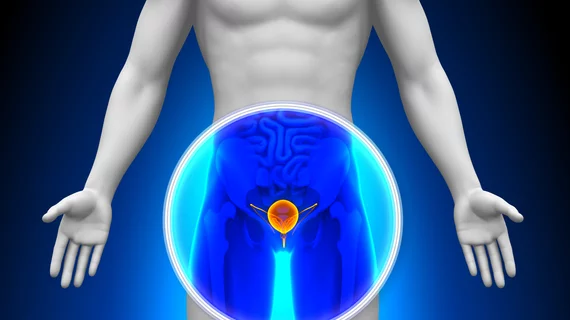How do radiologists with different experience levels fare when using PI-RADS?
Radiologists with varying levels of experience have strong agreement when detecting index lesions using PI-RADS, according to new research published in the American Journal of Roentgenology.
“The use of prostate multiparametric MRI (mpMRI) and targeted biopsy increases detection of clinically significant cancers while decreasing the diagnosis of indolent disease,” wrote Matthew D. Greer, MD, department of radiation oncology at the University of Washington School of Medicine in Seattle, and colleagues. “One obstacle to broad application of prostate mpMRI is the lack of standardization and training necessary to interpret mpMR images.”
That, of course, is where the Prostate Imaging Reporting and Data System (PI-RADS) comes in. To measure how radiologists with different experience levels compare when it comes to using PI-RADSv2, the study’s authors used data collected from 163 patients evaluated with mpMRI between April 2012 and June 2015. While 110 patients underwent prostatectomy following MRI, the other 53 had normal MRI findings and served as control subjects.
Nine radiologists participated in the research, three with high levels of experience with prostate mpMRI, three with moderate experience and three with minimal experience. The radiologists were from eight institutions located in six different countries. They were all experienced with using PI-RADSv2 before agreeing to participate.
Overall, the sensitivity for index lesions was comparable among all radiologists. Sensitivity was 80.9 percent for all readers, 83.4 percent for readers with high experience, 80 percent for readers with moderate experience and 79.2 percent for readers with low experience.
“We found excellent interobserver agreement for index lesion detection across reader experience,” the authors wrote. “This suggests that the PI-RADSv2 criteria are useful for finding clinically significant index lesions across a range of reader experience levels.”
Specificity, on the other hand, was significantly higher for the experienced radiologists. Specificity was 64.8 percent for all readers, 84 percent for readers with high experience, 46.3 percent for readers with moderate experience and 64.1 percent for readers with low experience.
“The experience dependence of specificity suggests the decision to perform biopsy should be set at a lower threshold for novice prostate mpMRI radiologists and in centers where prostate MRI is an uncommon examination,” Greer and colleagues observed.
The authors added that radiologists were blinded to prostate-specific antigen level and previous biopsy results, and providing such information could have improved results.

